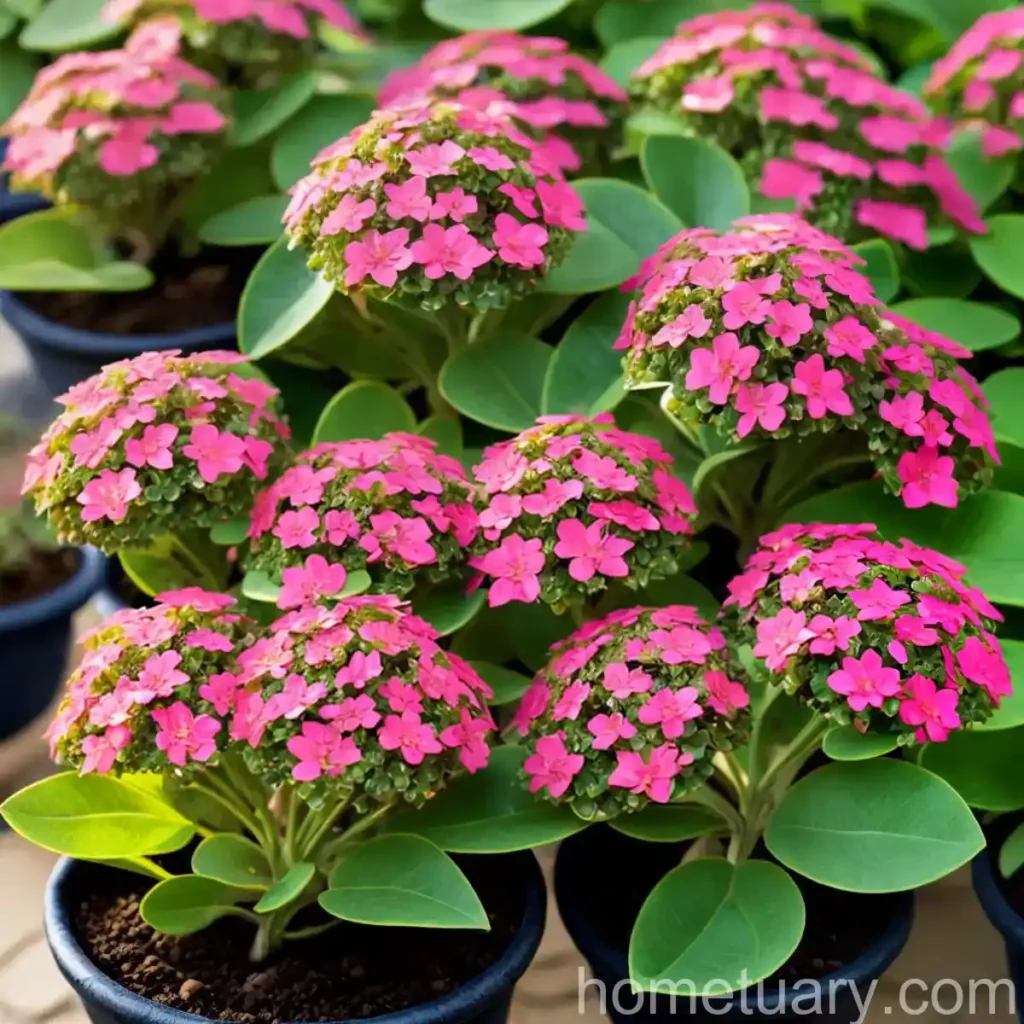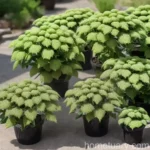The Wonderful World of Sweet Spurge (Euphorbia dulcis)
Welcome to the fascinating world of sweet spurge (Euphorbia dulcis)! In this comprehensive guide, we will explore everything you need to know about this beautiful plant. From its cultural significance and uses to practical tips on cultivation and care, this article aims to provide you with a deep understanding of sweet spurge. Whether you’re a seasoned gardener or just starting out, there’s something for everyone in this in-depth exploration.
What is Sweet Spurge (Euphorbia dulcis)?
Sweet spurge, scientifically known as Euphorbia dulcis, is a delightful perennial plant belonging to the Euphorbiaceae family. It is native to Europe and Western Asia and is renowned for its attractive foliage and unique flowering habits. The plant’s name “sweet spurge” is derived from the sweet, milky sap contained within its stems.
Key Takeaways – Sweet Spurge (Euphorbia dulcis)
Let’s take a moment to summarize the key takeaways about sweet spurge (Euphorbia dulcis) before delving into its various aspects.
- Scientific Name: Euphorbia dulcis
- Plant Family: Euphorbiaceae
- Nature: Perennial
- Native Range: Europe and Western Asia
- Key Features: Attractive foliage, sweet sap, unique flowers
Now that we have a basic understanding of sweet spurge, let’s explore its culture and uses in detail.
Culture
Understanding the cultural requirements of sweet spurge is essential for successfully growing and maintaining this plant. From its preferred sunlight and water conditions to soil and fertilizer needs, getting the culture right is the key to a thriving sweet spurge garden.
Uses
The beautiful and versatile nature of sweet spurge makes it a valuable addition to various settings. Let’s explore the different uses of this plant:
- Ornamental: Due to its attractive foliage and unique flowers, sweet spurge is often used in ornamental gardens, adding visual interest and a pop of color.
- Medicinal: Historically, sweet spurge has been used in traditional medicine for its purported medicinal properties. Its sap has been explored for potential therapeutic uses, though caution is advised due to its toxic nature.
- Landscaping: Sweet spurge is employed in landscape designs, where its unique features and adaptability make it an attractive choice for both large and small-scale projects.
Water
Sweet spurge thrives in well-drained soil and prefers moderate watering. It is important to avoid waterlogging the plant to prevent root rot. A balanced watering schedule, allowing the soil to partially dry out between waterings, is ideal for sweet spurge.
Sunlight
In terms of sunlight requirements, sweet spurge flourishes in full to partial sun. It appreciates bright, indirect light and should be positioned in a location that receives adequate sunshine for a portion of the day.
Fertilizer
When it comes to fertilizer, sweet spurge does not have high nutritional demands. A balanced, all-purpose fertilizer can be applied sparingly during the growing season to support healthy growth and blooming.
Soil
Sweet spurge prefers well-draining, loamy soil with a slightly acidic to neutral pH. Amending the soil with organic matter can improve its texture and fertility, providing an optimal environment for sweet spurge to thrive.
Pruning
Pruning is generally minimal for sweet spurge, primarily focused on removing spent flowers and shaping the plant. Additionally, it is important to wear gloves and take precautions when pruning sweet spurge due to the toxic sap that it contains.
Propagation
Understanding the various methods of propagating sweet spurge allows for the expansion of its presence in a garden or landscape. Let’s explore the different propagation techniques:
- Seeds: Sweet spurge can be grown from seeds, which should be sown in well-prepared soil in the spring. Germination may take a few weeks, and it is important to keep the soil consistently moist during this period.
- Division: As a perennial, sweet spurge can be propagated through division, where the plant clumps are carefully separated and transplanted to new locations.
Container Popularity
Sweet spurge’s adaptability and compact size make it a popular choice for container gardening. Its attractive foliage and unique growth habits add visual interest to container displays, making it a versatile option for patios, balconies, and small garden spaces.
Container Common Diseases
When grown in containers, sweet spurge is susceptible to certain diseases that can impact its growth and overall health. Understanding these common diseases can help in prevention and effective management. The following table provides an overview of these diseases:
| Disease | Symptoms | Management |
|---|---|---|
| Root Rot | Wilting, yellowing leaves, stunted growth | Ensure well-draining soil, avoid overwatering |
| Powdery Mildew | White powdery spots on leaves and stems | Provide adequate air circulation, apply fungicidal sprays |
| Leaf Spot | Dark lesions on leaves, leaf yellowing | Improve air circulation, remove affected foliage |
As with any plant, providing proper care, addressing environmental stressors, and promptly managing diseases are crucial for maintaining the health and vigor of sweet spurge in containers.
Disease Diagnosis
Diagnosing diseases in sweet spurge requires a keen eye for identifying distinct symptoms associated with specific pathogens or environmental stressors. Regular monitoring and prompt intervention are essential for disease management and prevention.
Common Pests
Sweet spurge, like many plants, is susceptible to pest infestations that can compromise its growth and appearance. Identifying and addressing common pests is important for maintaining the health of sweet spurge. The following are some of the pests that can affect sweet spurge:
- Aphids: These tiny insects feed on the sap of the plant, causing distortion and yellowing of leaves.
- Spider Mites: These arachnids can infest the undersides of leaves, leading to stippling and webbing.
- Mealybugs: White, cottony insects that can cluster on the stems and foliage, impacting the plant’s vigor.
Implementing integrated pest management practices, such as regular inspection, natural predators, and targeted treatments, can help manage and prevent pest problems in sweet spurge.
Botanist’s Tips
As a plant scientist and enthusiast, I would like to share some valuable tips for cultivating and caring for sweet spurge. These tips are designed to enhance your experience with this unique plant while promoting its health and vitality:
- Cautions with Sap: Always handle sweet spurge with care due to the toxic nature of its sap. Wear gloves when handling the plant and be cautious with the sap to avoid skin irritation.
- Pruning Practices: When pruning sweet spurge, use sharp, clean tools and dispose of any plant material, including sap, responsibly to prevent accidental contact or ingestion by pets or children.
- Planting Considerations: When selecting a planting site for sweet spurge, consider its potential to self-seed and spread, requiring management to prevent overcrowding in the garden.
By incorporating these botanist’s tips into your approach to sweet spurge, you can ensure a safe and enjoyable experience with this remarkable plant.
Fun Facts
To enrich our understanding of sweet spurge, here are some fun and interesting facts about this captivating plant:
- Sweet spurge is also known as “milkweed” due to the milky, latex-like sap contained within its stems.
- Despite its attractive appearance, sweet spurge is considered toxic and should be handled with caution to avoid potential health risks.
- The unique flowers of sweet spurge resemble miniature cup-shaped structures, adding a touch of charm to its overall aesthetic.
Links to External Resources
As we conclude our exploration of sweet spurge, I encourage you to further your knowledge and appreciation of this plant through the following external resources:
- The Poison Garden – Euphorbia dulcis: Explore the toxic nature of sweet spurge and its historical uses in traditional medicine.
- Royal Horticultural Society – Euphorbia dulcis: Delve into the cultivation and care guidelines for sweet spurge from the renowned Royal Horticultural Society.
- Garden Design Magazine – Ornamental Euphorbias: Discover the ornamental potential of sweet spurge and its role in contemporary garden designs.
These resources offer valuable insights and perspectives on sweet spurge, enriching your appreciation for this captivating plant.
In this comprehensive guide, we have delved into the captivating world of sweet spurge (Euphorbia dulcis), exploring its cultural aspects, uses, propagation techniques, and essential care guidelines. By understanding the unique characteristics and requirements of sweet spurge, we can cultivate and appreciate this plant with confidence and enthusiasm. Whether used ornamentally, medicinally, or in landscape designs, sweet spurge’s charm and adaptability make it an intriguing addition to any garden or natural setting.
I hope this guide has provided you with a deeper appreciation for sweet spurge and inspired you to explore the diverse and fascinating world of plants. Embrace the wonder of sweet spurge and let its beauty enhance your gardening journey!















